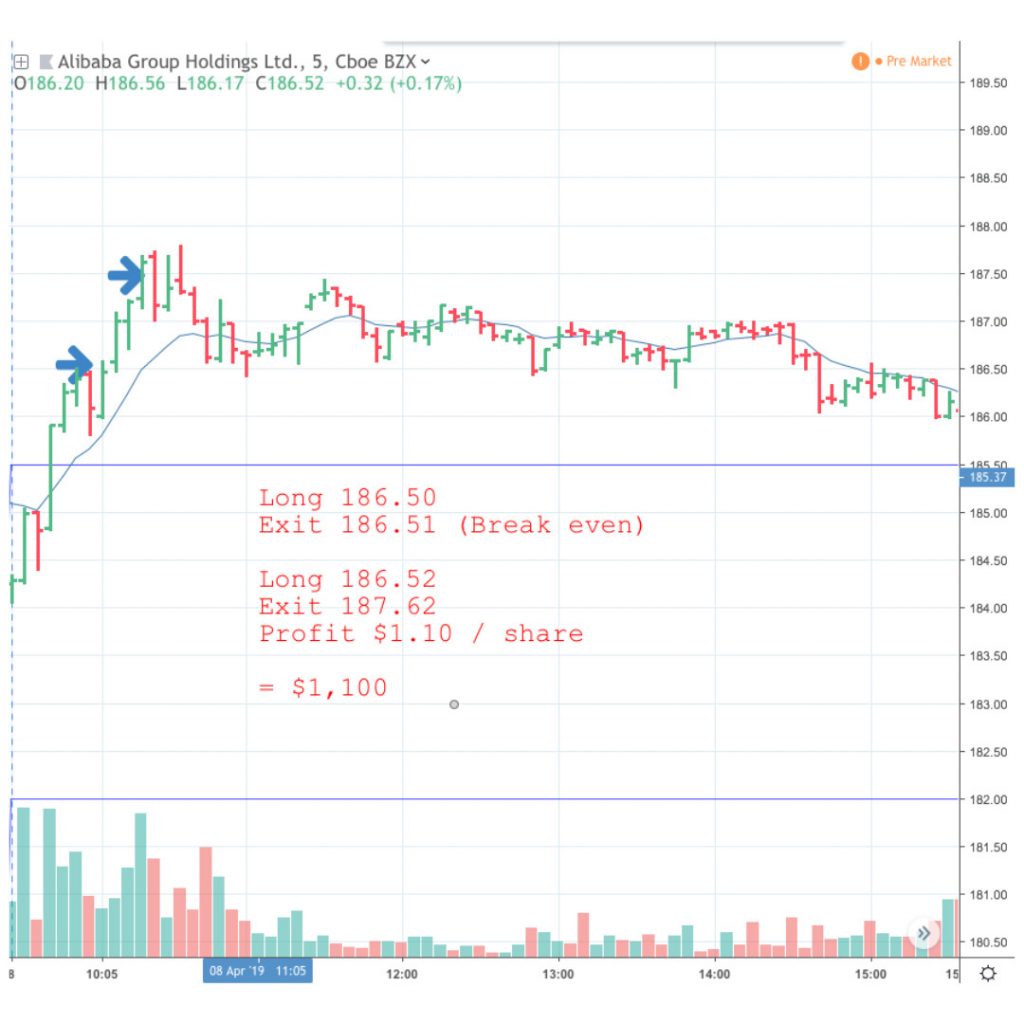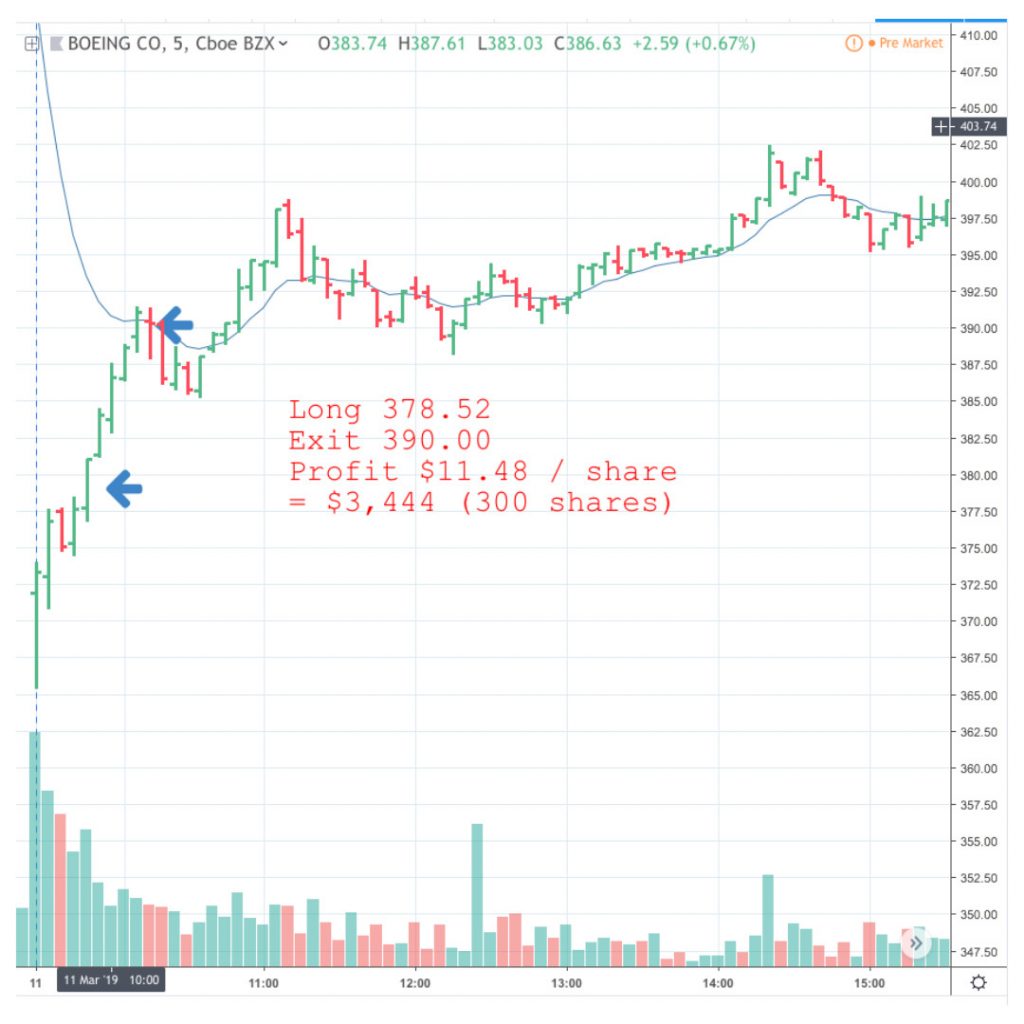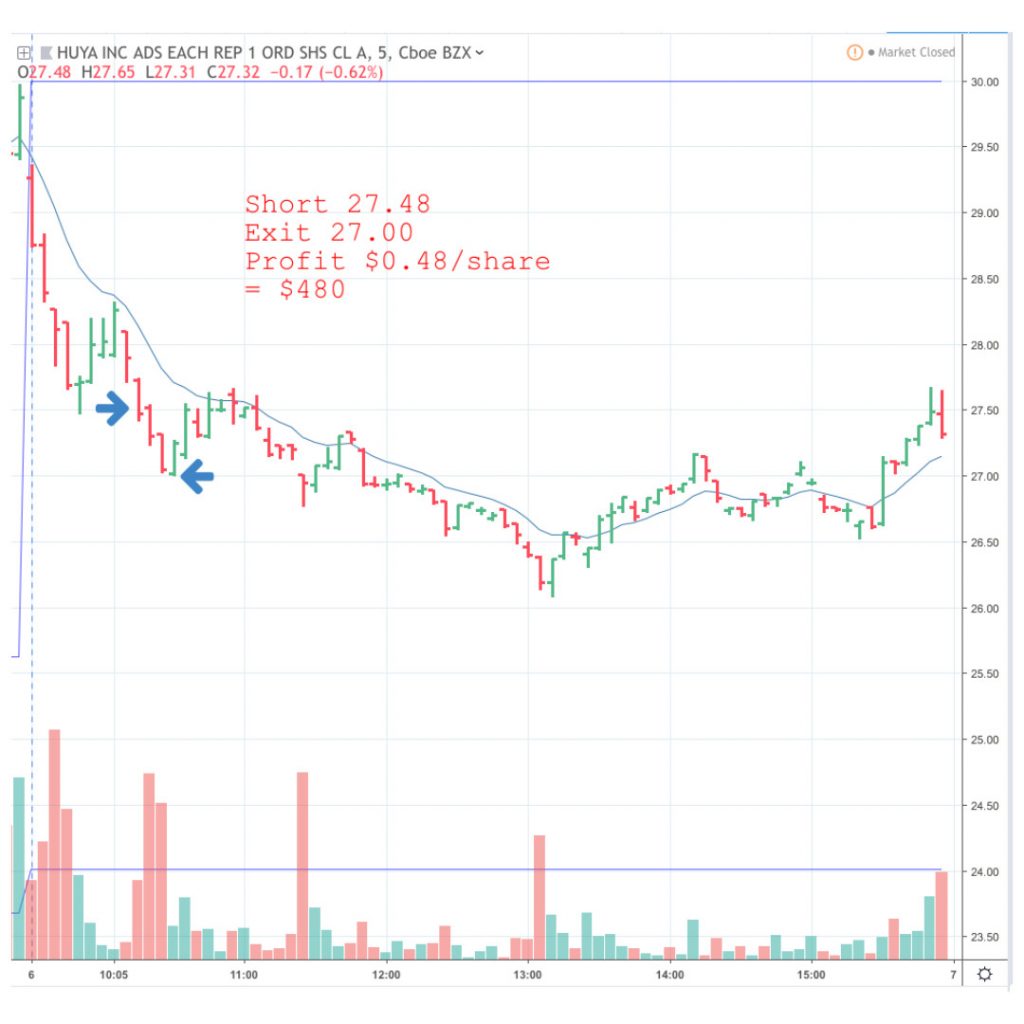I’m often asked about program trading, and whether computers make better traders than people. The theory seems sound. If execution is everything, and if our own psychology is our biggest barrier to success, then why not remove the human element altogether and let a machine do the work?
Continue reading “We Are Always Learning”Mystic Meg vs. Day Traders
A reader asks: Why do day traders think they know the future?
To which my reply is simple: they don’t.
I should elaborate. Successful, profitable day traders, do not imagine for a moment that they know the future. Perhaps some of the unsuccessful ones believe they possess powers of clairvoyance like 90’s British celebrity fortune teller Mystic Meg. If so, that might explain why they are not making any money.
Snark aside, I understand the point of view of the person asking the question. To see profitable trades in hindsight, such as those posted on this very blog, it probably looks like the trader knew in advance how the market was going to move. It’s easy to imagine that we could fortell with great accuracy how the chart would play out. But to do so is to misunderstand how day trading works.
The job of a trader is not to predict with 100% accuracy where a price is headed. It is not to know the future. Our job is to weigh up the current price, where the price has been recently, and to consider other facts that may influence it. It is to combine all of that information with our knowledge of how prices commonly behave, and to come up with an opinion about where the price might go next. Not a predication, not even a forecast, just an opinion. So our job is not to know the future, it is to know the past and present and to use that knowledge to form an educated guess about the future.
Just like any other opinion or guess, sometimes we will take a strong view and other times we will be less sure of ourselves. For example, we might read a very positive news report about a company, then watch its stock price begin to skyrocket when the market opens. From that combined information we may form an opinion that for the next few minutes at least, the price is likely to rise further. If we hold our opinion strongly — perhaps we reckon there is a better than 50% chance of our guess being right — we might decide to buy some stock. Once in our long position (i.e. holding the stock), we would continue to re-evaluate the price and all other available information and update our opinion about what the price might do next. When our best guess is that the rise is over, we would sell our position and take our profit.
But what if our best guess was wrong? What if we bought into the stock and the price dropped? The answer, of course, is that we would sell back our position quickly to minimise our losses.
All this constant guessing might sound exhausting, but the thing is that most of the time we won’t be able to guess at all. Most of the time when we are looking at a chart we will have absolutely no idea where the price might go next. And that’s perfectly valid, because most of the time prices wander around in a relatively tight range and there’s no trade to take. We are looking for those “ah-ha!” moments when everything comes together — when we see a pattern we recognise, when the conditions are just right, when we think to ourselves I’ve seen this happen before, and there’s a pretty good chance it’s going to play out like it usually does. We’re not predicting the future, we don’t know what’s going to happen next, but we have a strong enough opinion about it that it’s worth risking some money to profit from it.
If we can form an opinion about short-term price movements that is correct more often than it is wrong, then in theory we are laughing all the way to the bank. And actually, we can be be wrong more often than we are right and still make excellent profits. But that’s the subject for another post!
Some Thoughts On Lazy Day Trading
A correspondent recently asked if it was possible to successfully day trade stocks without doing much research. The question was poorly worded, because it depends entirely on how we define much. But before I answer the actual question, I wanted to address the rather worrying subtext within it.
Don’t Wait To Get Stopped Out
Here’s a trade that went wrong from the off:

It all started out so well. The setup was good and it looked like there was some momentum, but the price hesitated. My rule is if it doesn’t go well right away, get out. There’s no point hanging around to see if it will come good, because most of the time it won’t. I jumped ship with a single cent profit, which covered half the commission.
In this case the trade did eventually come good, and I went back in just a cent higher than I’d previously got out. This time there was no hanging around, momentum was there, and I rode it up for more than a dollar, thus taking more than a thousand dollars profit on BABA.
Emergency Exits
People quite often tell me they get killed in the market by being stopped out all the time. And almost equally as often they tell me that the trade they were stopped out of then turned around and became a winner, except they were no longer on board, adding insult to injury. They ask me if they are choosing bad stocks.
The thing is, you can’t really choose a bad stock as such, just a bad entry. Sure, if you pick the ‘right’ stocks you will find a higher rate of good entries coming your way, but even a poorly chosen stock can present a good entry. Just as a theoretically excellent stock can offer a bad one.
The problem these traders have is that they are waiting for their stop loss order to be hit. Stop loss orders are an essential tool for the day trader, and wherever possible I recommend having a stop automatically placed by our trading software as soon as our entry order is filled. But the job of that stop order is to be our emergency exit. It’s like an airbag in a car — a last line of defence if we lose control. If we are driving at high speed and see a collision ahead, we wouldn’t keep our foot on the gas and assume the airbag will save us, we would at least try and brake to stop the car before we hit the obstacle. The airbag is only there in case the brake doesn’t work, or if we cannot stop in time.
The stop loss order is the day trader’s airbag. It’s there to take us out of a trade if we lose our internet connection, or if our computer crashes before we end the trade, or if there’s some other kind of problem that means we are no longer in control. But as long as we are in control, we don’t want to rely on that stop order. If a trade doesn’t work out the way we envisage, there is no point waiting for the stop to get hit. We should always try to exit ourselves, and do so quickly with the minimum possible loss.
In the above trade, I was out with a 1 cent profit. That’s $10 on 1000 shares, so in reality a $10 loss once commission is taken into account. Had I waited for my stop loss order to be hit, I’d be looking at a $50 loss at least, which would be $70 after commissions. I could take a $10 loss on every core stock on my watchlist and still be better off than taking a single $70 loss! What’s more, I only need to make a tiny profit on one trade to easily cover my tiny loss. But if I rely on my stop and accept the bigger loss, I’m on the back foot with a defecit to try to recoup.
Having taken that tiny loss on BABA, the tape showed renewed momentum and the price made another break for it. There was no reason not to enter again, so in I went. Had I been burned by a larger intial loss, I might have hesitated on taking the second entry. But having got out quickly for essentially break-even, there was no reason to hold back.
Keeping losses small by exiting at the first sign of trouble means that we get to keep our account balance intact, it takes the pressure off trying to win back a large loss, and it means we can take multiple entries without hesitation or fear of the risk. Stop orders are for emergencies only.
Is It Ethical To Profit From A Plane Crash? (Trade)
I’m only posting one trade from yesterady, but it’s a biggie. And it raises a question of the kind that often comes up on these kinds of trades

Boeing openend with a massive gap down. For anyone reading this blog in the future, that’s because on Sunday (the day before this trade was taken), a Boeing 737 Max aircraft operated by Ethiopian Airlines, crashed, killing all 157 people on board. It was the second aircraft of this type to crash in less than five months. Within 24 hours, several airlines had announced they were grounding their 737 Max fleet pending the crash investigation. By all measures, this was a major incident, so it was inevitable that when the markets openend on Monday morning, BA would open down. What we didn’t know was where it would go next.
As day traders, we don’t need to know whether the stock is likely to go up or down on the day, we just want to know that it’s going to move. Preferably with good volume. BA was an obvious candidate for any stock day trader’s watch list on Monday.
As a stock, it did not disappoint, making (relatively) huge gains, even though it still closed down on the day. As far as my own strategy goes, it gave a perfect set up and blasted through several potential exit points without taking a breath. When two targets coincided and when the momentum took a break, I was out.
BA is a much higher priced stock than I would normally trade, but as I have talked about before, dynamically sizing your position to take account of the high price is one of the advantages of trading stocks. I had cash tied up elsewhere, and I don’t know BA as a stock at all, so I went with a fairly conservative 300 shares. The half-hour trade netted a final profit of $3,444.
Ethical Trading?
Here’s the inevitable question though: is it ethical to profit from a disaster? Is making more than $100 a minute profit from the fact people died something to be proud of? Or even just comfortable with?
Everyone has to make up their own mind, but here’s my take. The accident happened. It’s terrible, awful, and of course my thoughts are with the families of those who where killed. I hope beyond hope that the cause is found and that it helps engineers reduce the risk of such a crash ever happening again. But the fact remains the crash has happened. It’s in the past. We can’t change that. We cannot bring back the dead. Trading the resulting stock price movement is not going to alter what has already occured.
The wild swings in Boeing’s price were inevitable. They were going to happen whether or not people like me traded them. To shift a stock the size of BA the amount it moved requires institiutional amounts of money. It takes hedge funds and pension funds pulling out to cause such a drop. After that, algorithmic trading kicks in. It’s going to happen whether we like it or not. So we can either put our fingers in our ears, avert our gaze, and try to pretend it’s not happening, or we can accept the inevitable and get on with our job.
The job of trading almost always, if we think about it, involves acting on good and bad news. Stock prices move for a variety of reasons, but the big moves happen in response to news. Factory closing? The stock price will probably move. Do we stop to think about the people who will lose their jobs as a result of the closure though? Probably not. Just as we probaby don’t stop to celebrate the good news events that are disconnected from our own reality. We just watch the chart and trade the moves.
As horrific as a plane crash is, it is a news event and most of what happens subsequently is inevitable. So I see nothing wrong with continuning to do my job. There’s nothing to be gained from ignoring it.
Did you make money from BA yesterday? If so, perhaps consider donating some of your profit to people who can make a difference, like the Red Cross or Save The Children.
Is Day Trading Hard Work?
Is day trading hard work? is a question that reached me last weekend. My immediate thought was, “No,” shortly followed by, “Yes,” then, “Well, maybe…”
The reason for my initial indecision was because the answer is dependent on what we mean by hard work.
Want To Make $200k+ A Year?
Here are a couple of textbook quickie trades. I will warn you that they are dull, but there’s a reason I’ve posted boring trades today. First, a little short on HUYA:

Standard fare with a clear setup and a good target, easily hit. There was more after lunch, and even a late rally for anyone who likes that kind of thing. Obviously I was long gone by then, happy with my $480 made in ten minutes in the morning.
Here’s another, ELAN:

Another textbook short, essentially the same trade as HUYA and happening a few minutes earlier. The price dropped relatively more quickly, but the range was reduced so it only made around half the profit, “just” $260.
There’s nothing exciting about these trades, they’re not the massive $1k+ winners that I know some readers love to look at. But the fact is these kind of trades are very much the bread and butter of day trading life.
It’s easy to find three or four trades like these every day. They are simple to trade, low risk, low stress, and cobined they add up to a four figure profit. Do that just four days a week, take four weeks vacation, and you’re looking at making a couple of hundred thousand dollars a year, minimum. Minimum? Yes, because let’s face it, if you trade four mornings a week you’re going to come across some of those big winners as well every now and then, which will boost the bottom line even further.
$200,000 a year is not a bad “salaray” for working only about three hours a day, four days a week, from home (or anywhere else in the world). There might be other jobs that pay as well, but off the top of my head I can’t think of any. Certainly none that offer the kind of freedom day trading can.
I’m not posting these figures or charts to boast or brag. I post it because every week I get questions like “how much can I make day trading?”. There’s no single answer to that kind of question, but I hope this post at least gives an idea of what’s possible.
7 Reasons Why You Don’t Want My Daily Stock Picks
I had another email this week (my inbox has been busy recently, probably because I’ve been posting more trades here since I restarted my blog). The gist of it was this: can I create a mailing list, exclusive to customers of my stock trading book, and send my watch list of stocks to all the subscribers before the market opens each day? My answer to this type of question is always no, and I wanted to explain why.
Continue reading “7 Reasons Why You Don’t Want My Daily Stock Picks”
Learning To Day Trade
I had an email from someone asking me if I would give them personal one-on-one coaching in the practice of day trading. The short answer is, as it has always been, no. I’d like to share why, because it’s something that comes up every now and then, and it’s something that affects most traders learning their business.
Stand And Deliver, Your Money or Your Life
I’m often amused when my non-trading friends tell me that they could never play the markets for a living because they couldn’t cope with the risk. They say things like, “Aren’t you worried you’ll lose it all one day?”, and “What happens if there’s another stock market crash? You could get wiped out!”
These well-meaning but faulty assumptions come about for two reasons. The first is a lack of understanding of exactly what I do as a day trader. The second is a flawed idea of risk.
Continue reading “Stand And Deliver, Your Money or Your Life”